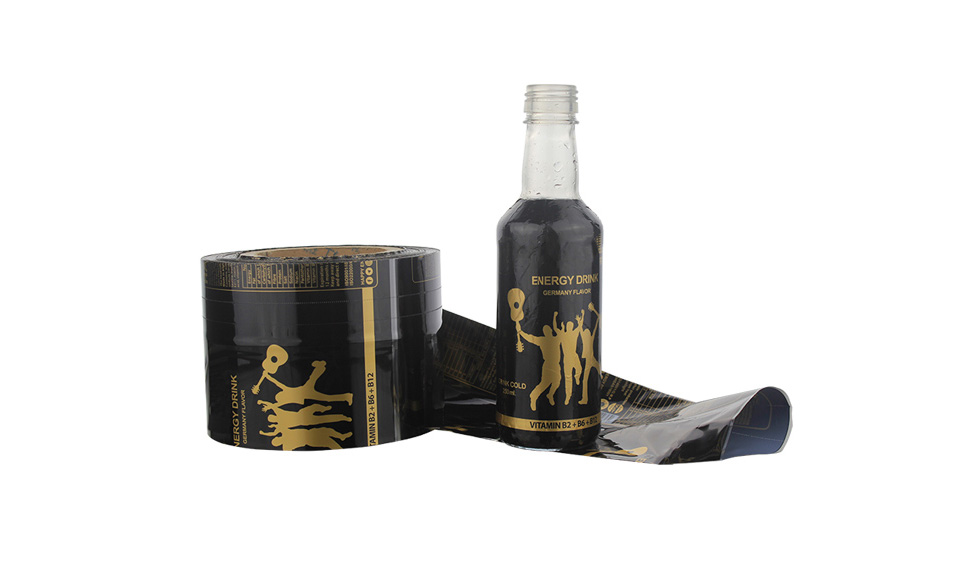Different from paper labels, heat-shrinkable films use non-absorbent printing materials such as PVC, PP, PETG, OPS, OPP, and various multi-layer co-extruded films. The properties of such materials determine their printing process and paper labels. different. In traditional offset printing, letterpress printing (flexo printing), gravure printing and silk screen printing, the printing method of heat shrinkable film labels is still mainly gravure printing. The reason is mainly due to a large number of domestic gravure printing machines and fierce competition in printing costs , and gravure prints have the characteristics of thick ink layer, bright colors and rich layers, and such labels are mostly long-running, and the gravure printing plate has a printing endurance of several million sheets, so for large-volume printing In terms of jobs, it is undoubtedly the most cost-effective. However, with the intensified market competition and the development of flexographic plate making, machinery, ink and other technologies, the proportion of flexographic printing is increasing year by year. But from the customer's point of view, they are more concerned with satisfying quality and reducing costs, and the printing method used is second.
1. Tension control
Since the film is more susceptible to tension changes during the printing process, resulting in inaccurate overprinting, it is necessary to pay great attention to the tension control during the printing process to maintain the stability and balance of the tension. The size of the tension adjustment should be determined according to the type of film and tensile strength. For example, the tensile strength of the film is weak, and it is easy to be stretched and deformed, and the tension is correspondingly smaller. For films with strong tensile strength, The tension can be correspondingly larger. In the case of a certain type of film, the width and thickness of the film are also important factors in determining the tension. The tension of the wide film should be larger than that of the narrow film, and the tension of the thick film is larger than that of the thin film.
Gravure heat-shrinkable film mainly uses unit type gravure printing machines. Nowadays, such machines are equipped with automatic tension control system and automatic color registration control system, which can automatically adjust the unwinding area, printing area and winding according to the error between the measured registration marks. Zone tension to ensure the tension stability of the printing process and the accuracy of the final overprint. Compared with stacked and unitized flexographic printing presses, flexographic heat shrinkable films are more suitable for CI type flexographic printing presses, because each color group shares an impression cylinder during the printing process, and the printing material and the impression cylinder are tightly packed. Closely fit, the change of tension is small, so that the tensile deformation of the material is small, and the registration accuracy is high.
2. Selection of ink
There are four main categories of inks used for shrink film printing: solvent-based inks, water-based inks, cationic UV inks and free-radical UV inks. As far as the application is concerned, in the field of shrink film label printing, solvent-based inks dominate, followed by water-based inks and free-radical UV inks, while cationic UV inks are expensive and troublesome to print. There are not many applications in the field of membranes. Solvent-based inks are mainly used for gravure and flexo heat shrinkable films. Different films should use special inks and cannot be mixed. Ink companies generally provide three solvent ratios of fast-drying, medium-drying and slow-drying for different materials. The printing factory can choose the appropriate solvent ratio according to the actual production conditions such as workshop temperature and printing speed. In addition to this, water-based inks and UV inks can also be used. But no matter what type of ink is used, it is necessary to fully consider the performance indicators of the ink must meet the requirements. For example, the shrinkage rate of the ink must match the shrinkage characteristics of the heat shrinkable film, otherwise the ink layer will split or even deink.
3. Control of drying temperature
How to control the drying temperature is very important when printing heat shrinkable film. If the drying temperature is too high, the material will undergo thermal shrinkage; if the temperature is too low, the ink will not dry completely, resulting in final adhesion and backside smearing. Both gravure and flexo presses are equipped with inter-color drying devices to ensure complete drying of each color ink. At the same time, in order to prevent the material from being deformed during the drying process, it is required to set up a cold air channel between the color groups to control the influence of residual heat. Freezer drums are used on today's printing presses to quickly reduce the temperature of the material during the printing process. Because the shrink film has common printability, such as strong chemical stability, low surface energy, smooth surface without absorption, and poor affinity with printing ink. Therefore, no matter what printing method is used, the film needs to undergo corona discharge treatment on the surface to improve its surface energy and roughness, and improve the adhesion fastness of ink on the surface of the material.


 English
English España
España





